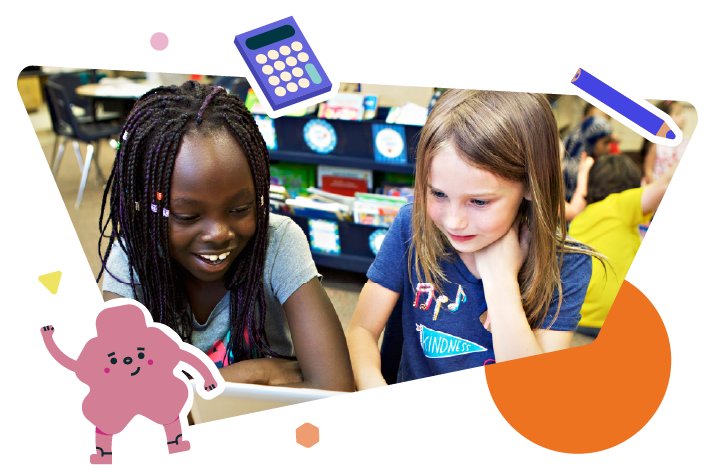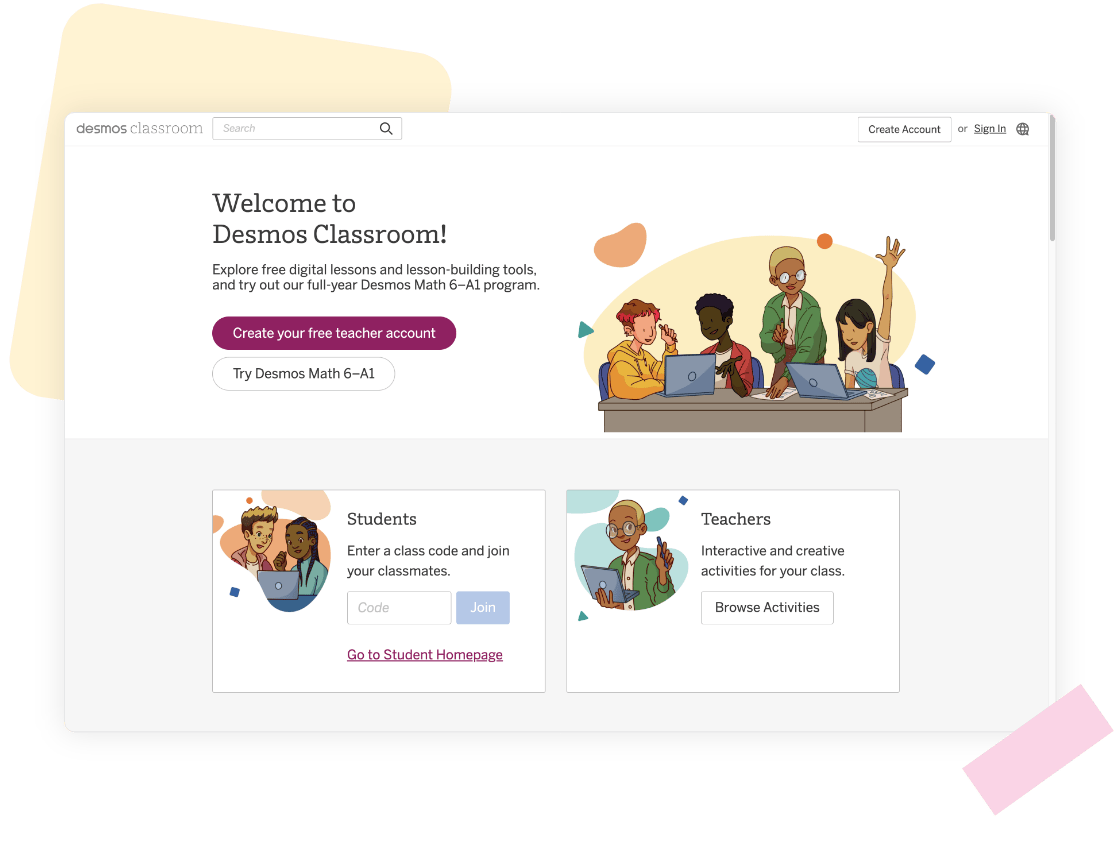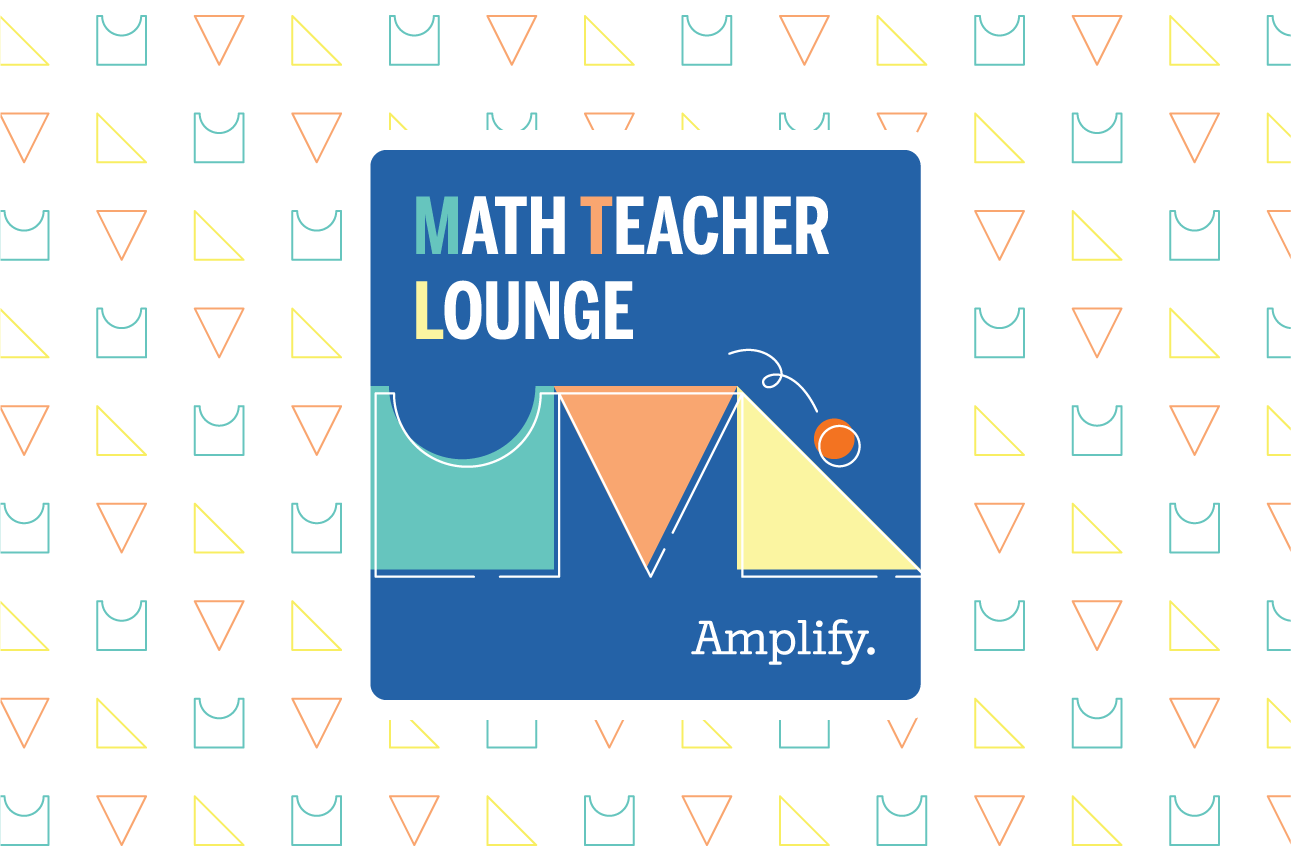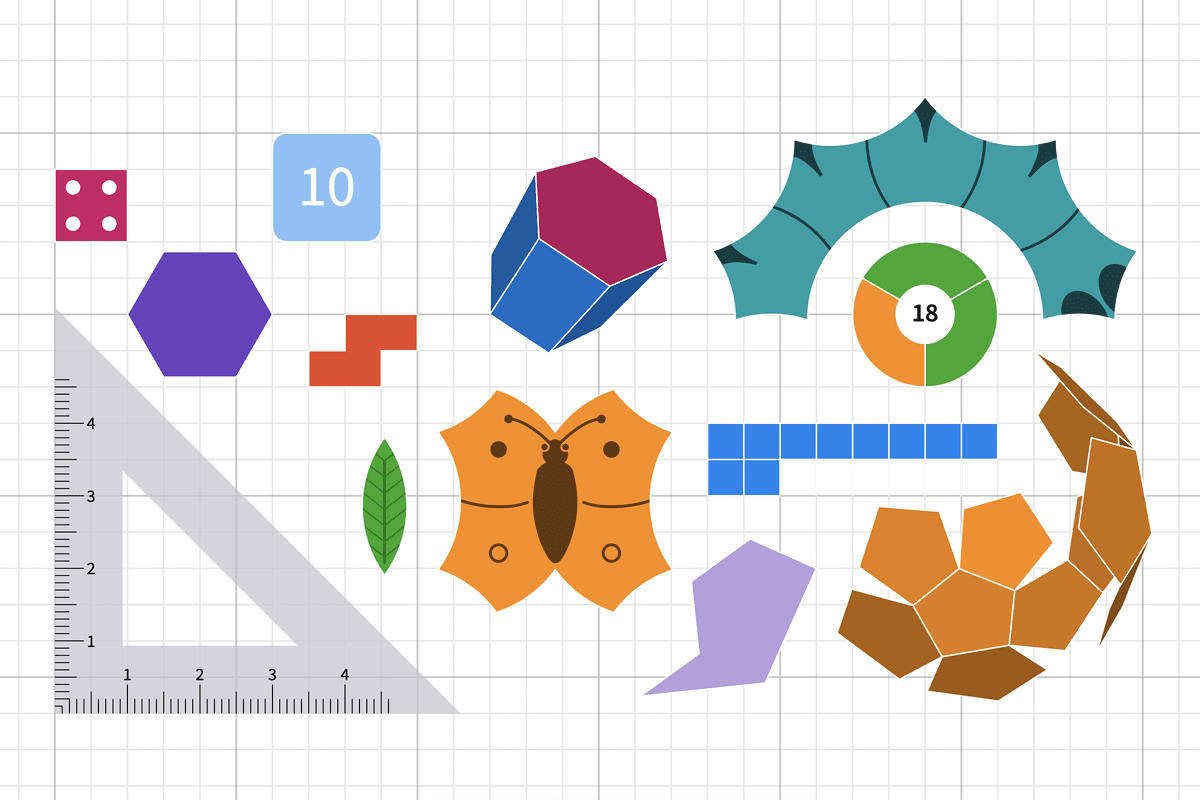
Math isn’t just numbers, logic, and calculation, nor is it just right and wrong. Math is everywhere around us, and part of us. Not just because we have to calculate tips or estimate travel time in everyday life, or because math describes how our hearts beat and neurons fire, but because we all come to math with our own feelings, narratives, and experiences. People often say, “I’m not a math person”—but we’re all math people, because we’re all made of math.
That’s not always how math is taught, though. Fortunately, there are visionary math teachers, and innovative curricula like Amplify Desmos Math—built using the powerful teaching and learning tools of Desmos Classroom—that bring math alive this way. Their aim? To build deep math proficiency for life.
And we brought a truly game-changing group of them together for our 2024 Math Symposium. This valuable (and free!) opportunity for educator professional development is still available to you on demand.
- What we know—and don’t know—about how best to teach math.
- Why curiosity-driven instruction is critical in the math classroom.
- What practices can help create dynamic problem-based learning experiences that leverage student ideas and build math fluency and proficiency.
And there’s more! Here’s a peek at what each expert had to say:
Welcome: What we know and don’t know about how to best teach math–and build math proficiency for life
Jason Zimba, Chief Academic Officer of STEM at Amplify
“If you ask me: ‘Should I focus on fluency, concepts, or applications?’ My answer is yes,” says Zimba. He offers an example of watching his daughter doing math homework to make the case for building math skills with practice and repetition—part of the time. “You do need practice and repetition to become skilled, but mindless exercises are going to produce brittle procedural skills. The quality and composition of the tasks we set for students is going to make a difference,” he says, noting the power of games and playfulness and “the importance of making practice mindful and anchored in concepts.” And that, he says, is exactly what today’s speakers will explore.
How students’ personal narratives shape math learning
Gerardo Ramirez, Ph.D., Associate Professor of Educational Psychology at Ball State University
It is impossible to separate the “numbers” part of math from the feelings students bring to it, argues Ramirez. Students have likely used their past experiences in math class—whether they found it challenging, affirming, or something else—to build a narrative about who they are as a math person. But teachers also have the opportunity to help students, if necessary, “rewrite the story they’re currently composing,” he says. A few ways to do this:
- Have students come back and do the same exercise twice, ideally within the first two weeks of class. “Students will notice that they’ve grown,” he says.
- Ask students how math makes them feel, literally in their bodies. Does it make their hearts beat fast? You can help them see that that’s not necessarily a bad thing—if nothing else, it’s energy, he says: “Giving students the language for and way of visualizing this can be helpful with changing their stories.”
- “Treat students the way you would treat a guest in your home,” he says—it sends every math student the message that they’re equally deserving of respect.
Bringing math to life: How games build fluency and engagement
Jennifer Bay-Williams, Ph.D., Author and Mathematics Education Professor at University of Louisville
Bay-Williams describes math strategy games as a way to support students who struggle with math—and to bring fun into the math classroom for all. Games can help build fluency and a deeper understanding of mathematical concepts. So beyond the fun, it’s serious: “This is an equity issue,” she says. “All students need the opportunity to feel like they can figure out mathematics—to develop a ‘math identity’ that they can do math, and start feeling like, ‘I can figure this out.’ It’s this agency that we are going for and the only way that’s going to happen is when we ensure that every student has access to a range of strategies and regular opportunities to choose new strategies. That’s what games do for us.” (Bay-Williams also brings fun into the session by playing math games with participants—so don’t miss it!)
Building a culture of “math people”: Leveling up engagement in your K–8 math classroom
James Oliver, STEM Product Specialist at Amplify
Oliver tried wearing goofy outfits to grab the attention of his math students—and it taught him something a bit humbling. “We are not the source of engagement,” he says. Rather than drawing attention to impart information, teachers need to create opportunities for students to engage not with them, but with math. What makes an activity student-centered? “Allowing students to explore and then also explain based on their curiosities,” he says. Just a few of the approaches he describes:
- Start class with low-stakes, low-floor warmups that can pique every student’s curiosity.
- Use the “notice and wonder” approach to encourage students to observe, reflect, and ask questions before diving into solutions.
- Present relatable scenarios—like bringing in menus from their favorite restaurants, creating orders, and then calculating tips.
Math that motivates: Centering student ideas in the math classroom
Kristin Gray, Executive Director of the Math Suite at Amplify
Correct answers matter, but so does how students get them. “We want students to deeply understand concepts so when they are presented with a novel problem, they can transfer the knowledge and understandings that they have. So connections are really important,” says Gray. “And the way we help them form connections is by centering their work and their ideas. One way to do that is to adjust the lens when you plan your lessons, shifting from ‘How do I teach students to get the answer?’ to ‘How do I use the problem to teach mathematics?’”
How to invite students into more effective math learning
Dan Meyer, Educator and Dean of Research at Amplify
Stephanie Blair, Vice President of Desmos Coaching
“Inviting student thinking is not a matter of creating personalized cupcakes for every student—though they would appreciate that,” says Meyer. He and Blair describe it as literally inviting students to offer their ideas and observations, and validating them all. “The ideal here is that the teacher functions like a vacuum, drawing out student thoughts in a stance of ‘I value your thinking,’” Meyer says. Also crucial: drawing on students’ background knowledge and making sure not to assume that all students bring the same knowledge into the classroom.
Developing young children’s identities and competencies as mathematicians
Akimi Gibson, Senior VP of Multiplatform Global Education Planning and Integration at Sesame Workshop
“Our role as educators is to provide children access points that help them feel a sense of belonging to the world of mathematics,” says Gibson. Some of those points include providing opportunities for problem-solving with feedback and support, using mindfulness to help manage math anxiety, and helping children develop a growth mindset. But there’s a next level as well, Gibson adds: “Committing to the whole child includes partnering with family and attending to our own professional development.”
We hope you’re inspired to watch the recording of our symposium—and create a free account for Desmos Classroom. You’ll find creative ways to engage every student with our free interactive lesson collections that K–12 students can use in the classroom. You can also customize lessons or build your own using the Activity Builder tool. Try it and see how it can help you cultivate a classroom of collaborative learners ready to make math part of their lives.
The symposium program also includes the following sessions:
Class Openers That Foster Numeric, Algebraic, and Geometric Thinking
Oscar Perales, Math Teaching and Learning Specialist
Discover, Describe, and Develop Ways of Thinking About Math for Grades 6–8
Kurt Salisbury, Director of Math 6–12 Core Curriculum at Amplify
Even more to explore
- Listen to Math Teacher Lounge.
- Engage students in math and art with the PolyPad Art Contest.



